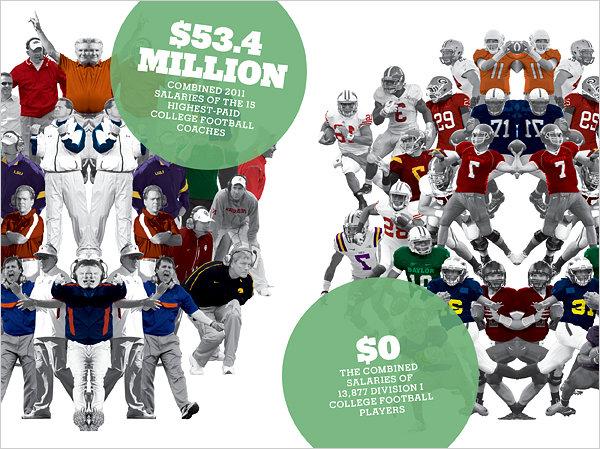How Texas Universities Are Adapting to the NCAAŌĆÖs NIL Revolution in College Sports
Transforming College Athletics: The NIL EraŌĆÖs Impact on Texas Football Programs
The NCAAŌĆÖs groundbreaking decision to permit college athletes to earn money from their Name, Image, and Likeness (NIL) has fundamentally altered the collegiate sports environment in Texas. Leading institutions such as the University of Houston, Rice University, the University of Texas, and Texas A&M are rapidly adjusting to this new reality, where athletes can legally capitalize on their personal brands. This shift has introduced a competitive marketplace off the field, compelling programs to rethink recruitment and retention strategies as athletes increasingly weigh immediate financial incentives alongside traditional collegiate benefits.
Immediate consequences of the NIL policy include:
- Stronger Recruiting Leverage: Universities like Texas A&M and UH have secured top-tier talent by facilitating access to lucrative endorsement deals both locally and nationally.
- Retention Difficulties: Rice University has encountered challenges in keeping athletes who are drawn to schools with more robust NIL support systems.
- Increased Program Investment: The University of Texas is channeling resources into comprehensive NIL education and support to help athletes maximize their earning potential.
| Institution | Initial NIL Approach | Resulting Impact |
|---|---|---|
| University of Houston | Collaborations with local enterprises for exclusive endorsements | Elevated recruitment appeal |
| Rice University | Emphasis on academic-related NIL opportunities | Struggles with athlete retention |
| University of Texas | Development of NIL training and support programs | Boosted athlete earnings and engagement |
| Texas A&M | Marketing partnerships involving alumni networks | Enhanced athlete visibility in the marketplace |
Financial Prospects and Obstacles for TexasŌĆÖ Top Universities Under NIL Regulations
The NCAAŌĆÖs updated policies on athlete compensation present a complex financial landscape for TexasŌĆÖ flagship universities. Institutions with expansive athletic programs and strong brand recognition, such as Texas and Texas A&M, are positioned to capitalize on new revenue streams through athlete endorsements and sponsorships. Their extensive donor bases and media presence amplify these opportunities. Conversely, smaller programs like UH and Rice face hurdles in matching the financial allure of larger schools, risking the loss of promising athletes to competitors offering more substantial NIL benefits.
Key financial considerations include:
- Reallocation of Budgets: Balancing traditional scholarship funding with emerging NIL-related expenditures.
- Diversification of Revenue: Growth potential in merchandising, media rights, and sponsorships linked to athlete branding.
- Compliance and Oversight Costs: Increased administrative efforts to ensure adherence to evolving NCAA NIL regulations.
- Heightened Recruitment Competition: Athletes prioritizing NIL earning potential may shift recruitment dynamics.
| University | Projected NIL Revenue Impact | Increase in Compliance Expenses |
|---|---|---|
| Texas A&M | Over $7.5 million | 20% rise |
| University of Texas | Exceeding $9 million | 25% rise |
| University of Houston | $2 million to $3 million | 15% rise |
| Rice University | $1 million to $1.5 million | 12% rise |
Adapting Recruitment Tactics in the NIL-Driven Collegiate Sports Market
Texas universities are overhauling their recruitment methodologies to thrive in an environment where athletesŌĆÖ marketability and NIL potential are pivotal. The traditional focus on athletic skill and scholarships is now complemented by strategic brand partnerships and financial incentives. Coaches and recruiting staff must blend talent evaluation with savvy marketing, leveraging local and national brand collaborations and data analytics to attract elite prospects. Additionally, ensuring compliance with NCAA NIL regulations has become a critical component of recruitment operations.
To stay competitive, programs are emphasizing comprehensive value propositions that extend beyond monetary rewards. This includes enhanced academic support, mental wellness programs, and community involvement initiatives that align with the priorities of todayŌĆÖs student-athletes. Recruitment innovations encompass:
- Customized Brand Partnerships: Aligning NIL deals with athletesŌĆÖ personal identities and community ties.
- Data-Driven Talent Identification: Employing social media metrics and performance analytics to pinpoint promising recruits early.
- Robust Compliance Training: Educating athletes and staff on NIL rules to prevent violations.
| University | Recruitment Focus | Innovative Approach |
|---|---|---|
| University of Houston | Local Brand Collaborations | Creation of athlete endorsement hubs |
| Rice University | Balancing Academics and Athletics | Flexible scholarship models |
| University of Texas | Technology-Enhanced Recruitment | AI-driven prospect evaluation |
| Texas A&M | Compliance and Education | Appointment of dedicated NIL compliance officers |
Strategies for Sustaining Competitiveness Amidst Changing Athlete Compensation Models
To remain competitive in the evolving NIL landscape, Texas universities must implement multifaceted strategies that prioritize athlete development holistically. Beyond financial incentives, investing in academic resources, mental health support, and career development programs creates a sustainable and attractive environment for recruits focused on long-term success. Leveraging community ties and alumni networks to build distinctive NIL opportunities can further enhance program appeal.
Effective approaches include:
- Partnering with Third-Party NIL Platforms: Facilitating athlete earnings while maintaining regulatory compliance.
- Comprehensive Education Programs: Empowering athletes to manage their personal brands and financial opportunities responsibly.
- Engagement with Boosters and Local Businesses: Developing innovative partnerships that benefit both athletes and the community.
| University | Core Strategy | Anticipated Outcome |
|---|---|---|
| University of Houston | Community-Centered NIL Programs | Improved local support and athlete retention |
| Rice University | Focus on Academic Excellence and Branding | Enhanced recruitment appeal |
| University of Texas | Strengthened Booster Partnerships | Expanded funding opportunities |
| Texas A&M | Comprehensive Athlete Education | Better NIL negotiation outcomes |
Conclusion: Navigating the New Frontier of College Sports in Texas
The NCAAŌĆÖs introduction of NIL compensation is reshaping the collegiate sports framework across Texas, compelling universities like UH, Rice, Texas, and Texas A&M to rethink their athletic and academic models. This paradigm shift offers both promising opportunities and significant challenges, from recruitment battles to financial management. As these institutions continue to adapt, the balance between athletic performance, academic integrity, and monetization will be crucial. The coming years will reveal how effectively TexasŌĆÖ college sports programs can thrive in this transformative era.




